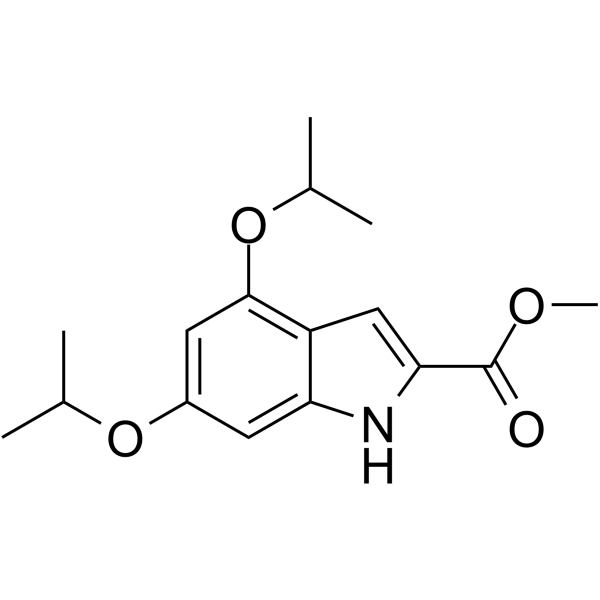CaMK
The Ca2+/calmodulin-dependent kinase (CaMK) family has been recognized as a key mediator in living organisms and various biological processes.
Calcium/calmodulin kinase II (CaMK II) is a multifunctional cytoplasmic calcium and calmodulin-dependent protein kinase that phosphorylates and alters the function of a variety of substrates. The CaMK II pathway has been found to regulate the RANKL-induced osteoclast formation via the cAMP-response element binding protein (CREB) pathway.
Among many signaling pathways of proliferation, intracellular calciumol/L has been extensively demonstrated to be very important. In cytoplasm, calciumol/L binds to calmodulin, and then activates the Ca2+/calmodulin (CaM) dependent kinases (CaMKs) which are a family of structurally related serine/threonine protein kinases including CaMKI-IV. CaMKII, a multi functional protein kinase, is ubiquitously involved in many physiological processes including control of cell cycle, apoptosis, gene expression, and neurotransmission.
Ziele für CaMK
Produkte für CaMK
- Bestell-Nr. Artikelname Informationen
-
GC12739
A 484954
A 484954 ist ein hochselektiver Hemmer des eukaryotischen Elongationsfaktors 2 (eEF2) mit einem IC50-Wert von 280 nM.
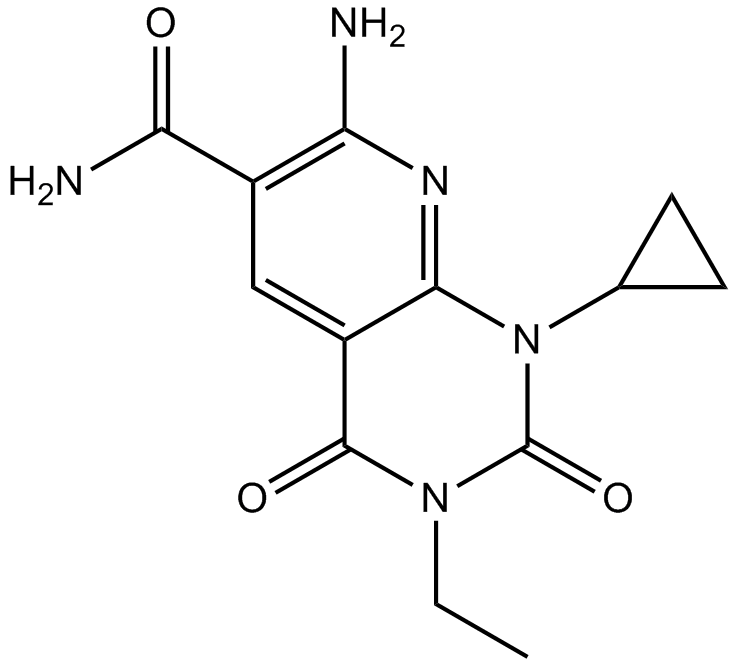
-
GC60037
A-3 hydrochloride
A-3-Hydrochlorid ist ein potenter, zellgÄngiger, reversibler, ATP-kompetitiver, nicht-selektiver Antagonist verschiedener Kinasen.
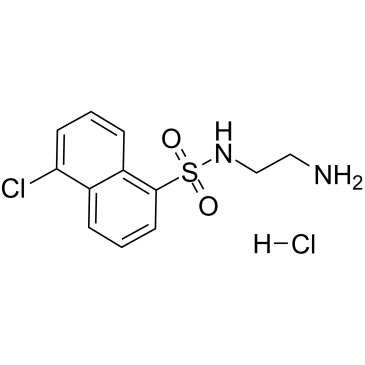
-
GC33683
Autocamtide 2 (Autocamtide II)
Autocamtide 2 (Autocamtide II) ist ein hochselektives Peptidsubstrat der Calcium/Calmodulin-abhÄngigen Proteinkinase II (CaMKII).
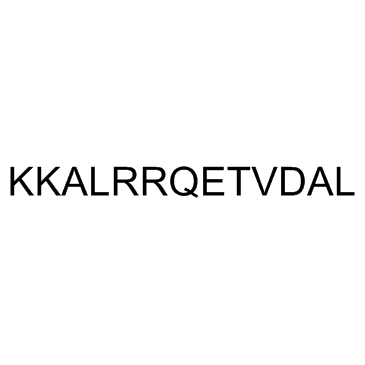
-
GC34390
Autocamtide 2, amide
Autocamtide 2, Amid ist ein Substrat (100 μM Endkonzentration) fÜr Assays der CaMK-Familie.
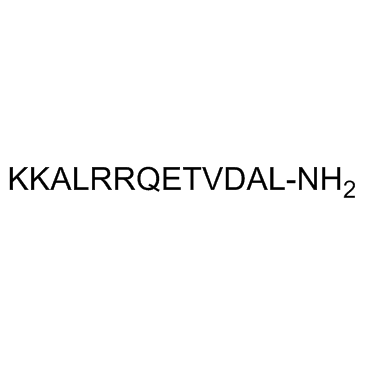
-
GC35432
Autocamtide-2-related inhibitory peptide (TFA)
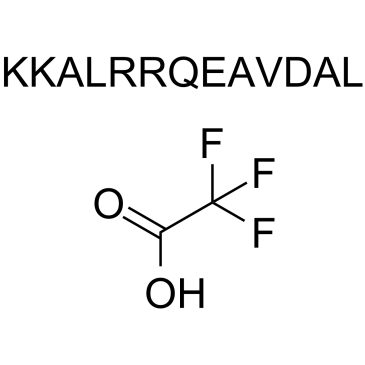
-
GC50305
Autocamtide-2-related inhibitory peptide, myristoylated
Autocamtide-2-related inhibitory peptide, myristoylated ist das myristoylierte Autocamtide-2-related inhibitory peptide.

-
GC14326
Calmidazolium chloride
Calmidazoliumchlorid (R 24571) ist ein Calmodulin (CaMK)-Antagonist, der die CaM-abhÄngige Phosphodiesterase und die Calmodulin-induzierte Aktivierung von Erythrozyten-Ca2+--Transport-ATPase mit IC50-Werten von 0,15 bzw. 0,35 μM antagonisiert.
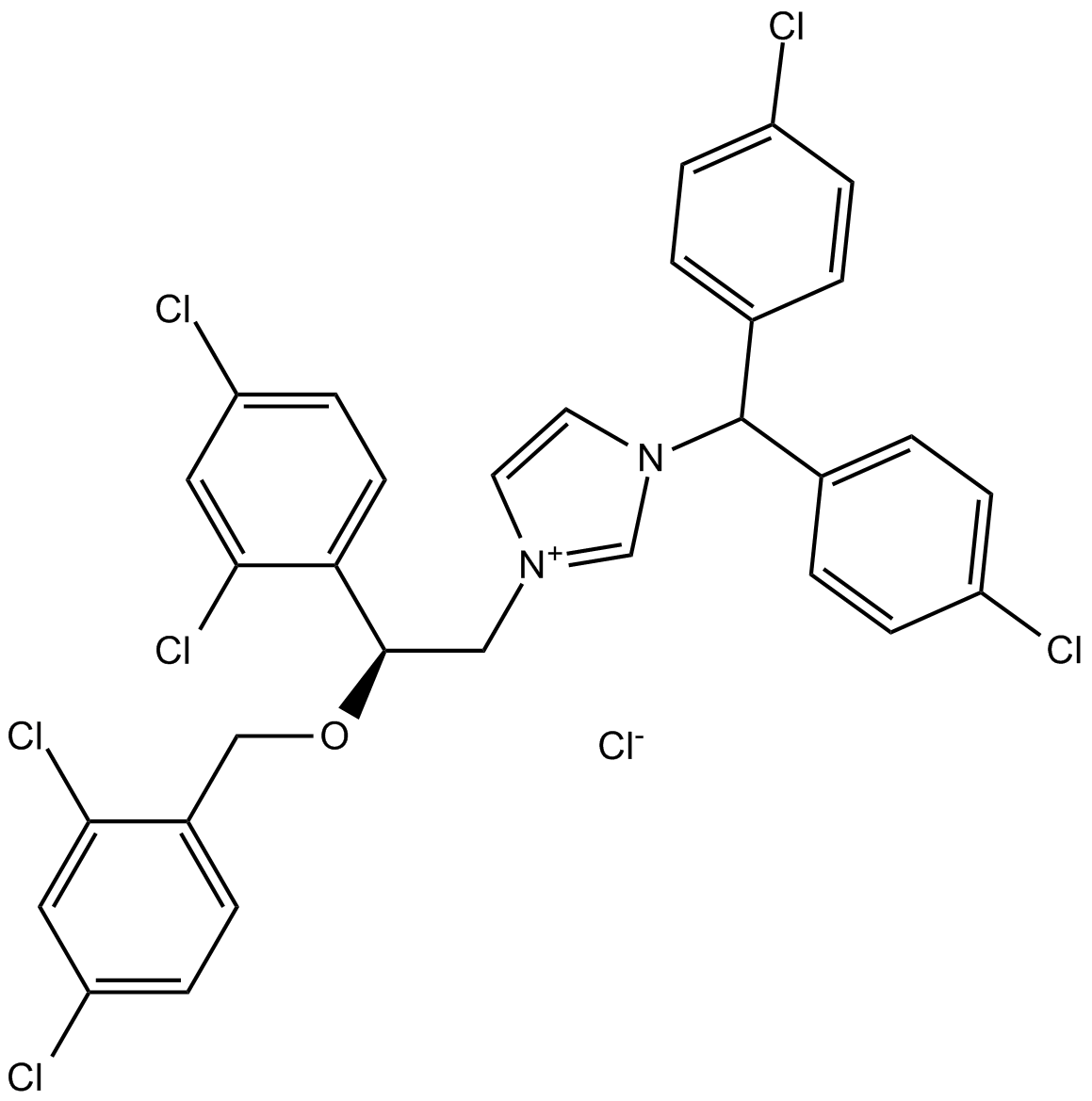
-
GC31170
Calmodulin-Dependent Protein Kinase II 290-309
Calmodulin-abhängige Proteinkinase II 290-309 ist ein potenter CaMK-Antagonist mit einem IC50 von 52 nM zur Hemmung der Ca2+/Calmodulin-abhängigen Proteinkinase II.
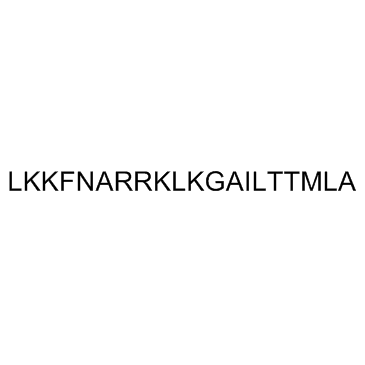
-
GC61521
Calmodulin-Dependent Protein Kinase II(290-309) acetate
Calmodulin-abhÄngige Proteinkinase II (290-309) Acetat ist ein potenter CaMK-Antagonist mit einem IC50 von 52 nM zur Hemmung von Ca2+/Calmodulin-abhÄngiger Proteinkinase II.
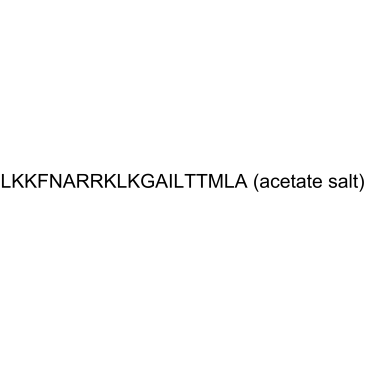
-
GC35601
CaMKII-IN-1
CaMKII-IN-1 ist ein potenter und hochselektiver CaMKII-Inhibitor mit IC50 von 63 nM; signifikant hohe SelektivitÄt gegen CaMKIV, MLCK, p38a, Akt1 und PKC.
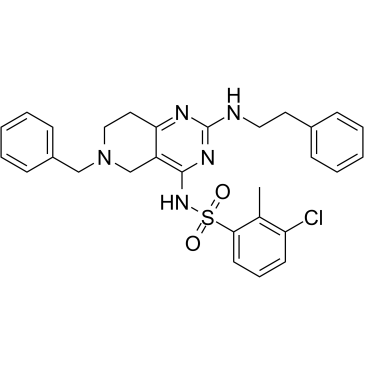
-
GC35820
DDD107498 succinate
DDD107498-Succinat (DDD-498-Succinat) ist ein potenter und oral aktiver Malariawirkstoff, der mehrere Lebenszyklusstadien des Parasiten hemmt, mit einem EC50-Wert von 1 nM gegen P.
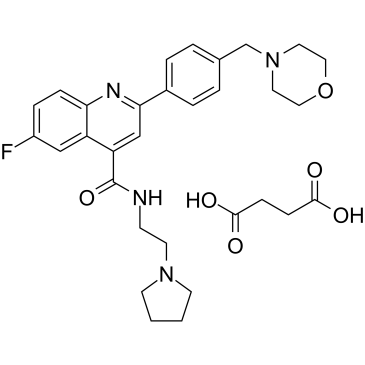
-
GC11362
K 252a
Ein Protein-Kinase-Inhibitor
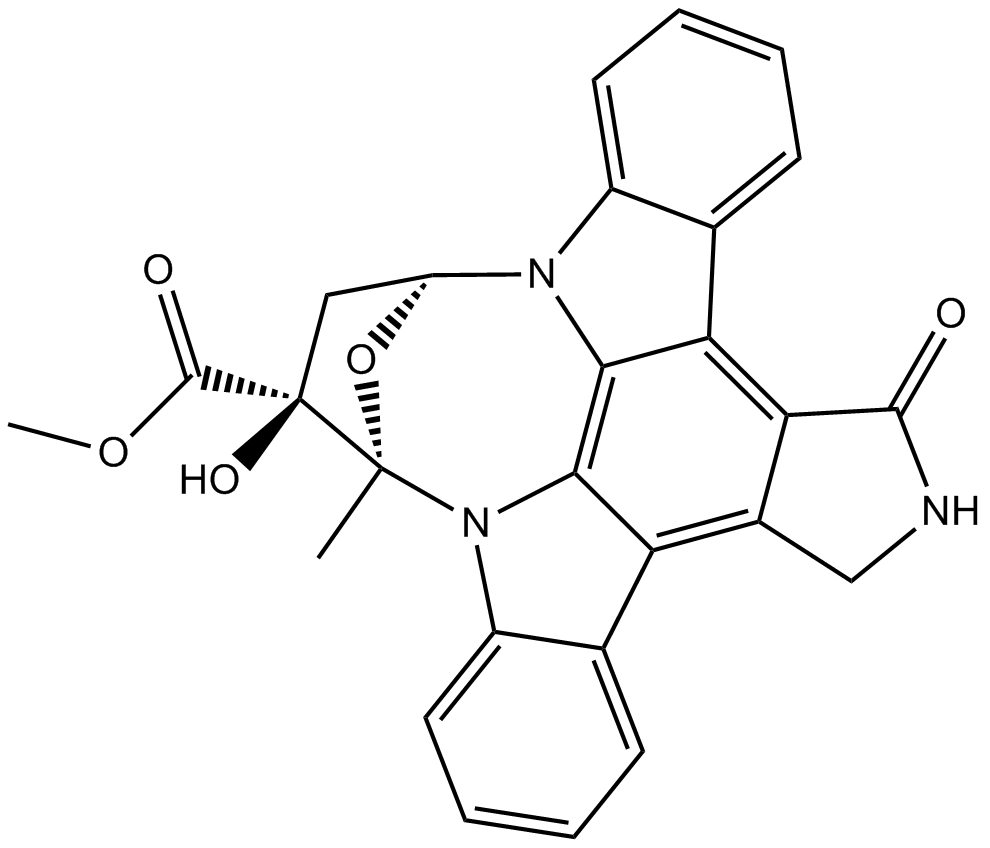
-
GC14202
KN-62
Inhibitor of Ca2+/calmodulin-dependent kinase type II

-
GC14132
KN-92
An inactive control compound for a CaMKII inhibitor
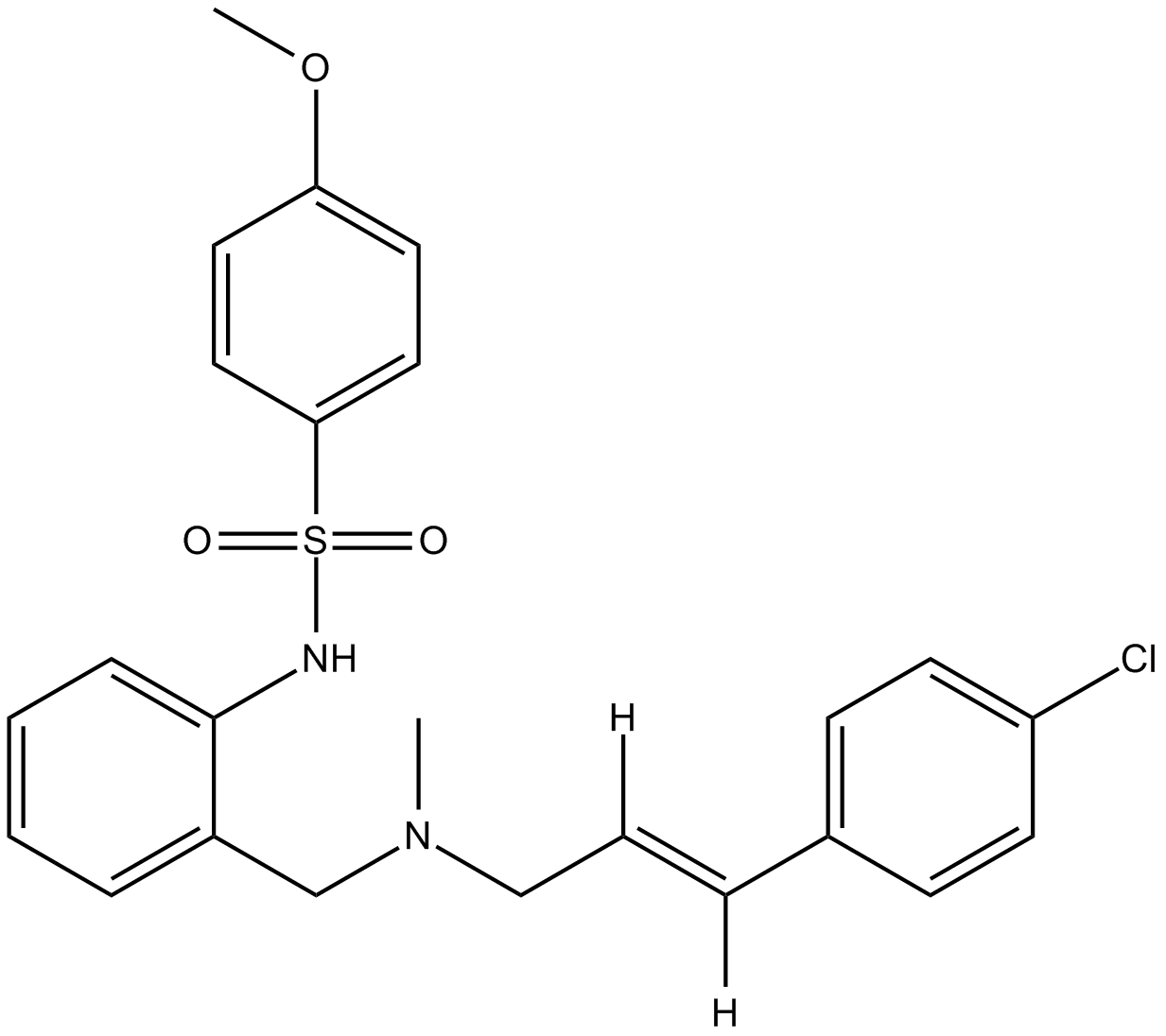
-
GC15988
KN-92 hydrochloride
An inactive control compound for a CaMKII inhibitor
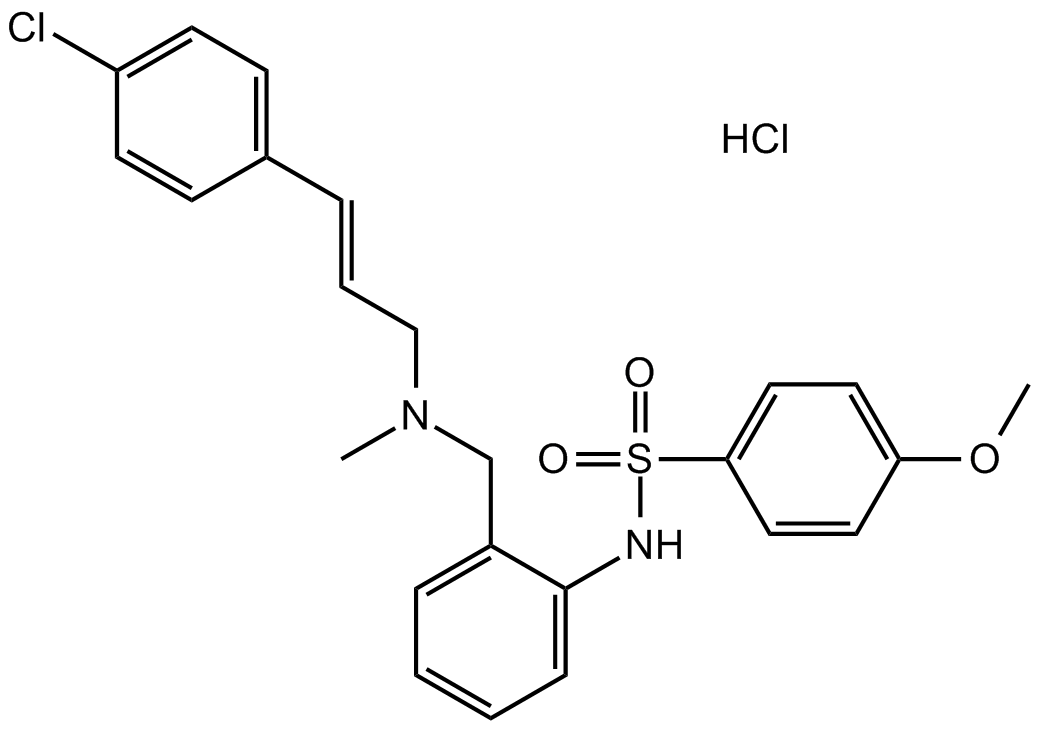
-
GC16981
KN-92 phosphate
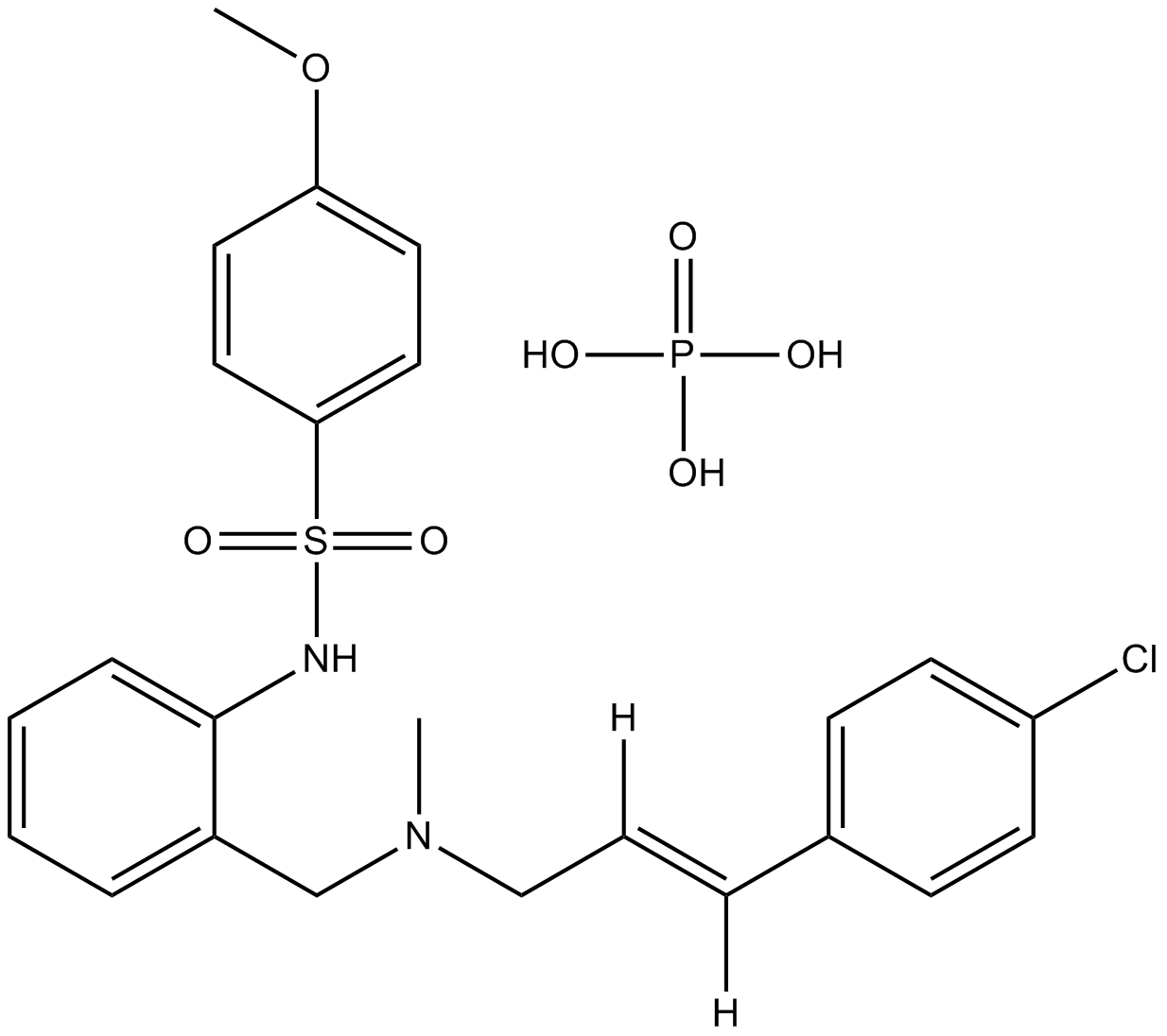
-
GC10629
KN-93
Selektiver Inhibitor der Ca2+/Calmodulin-abhängigen Kinase Typ II
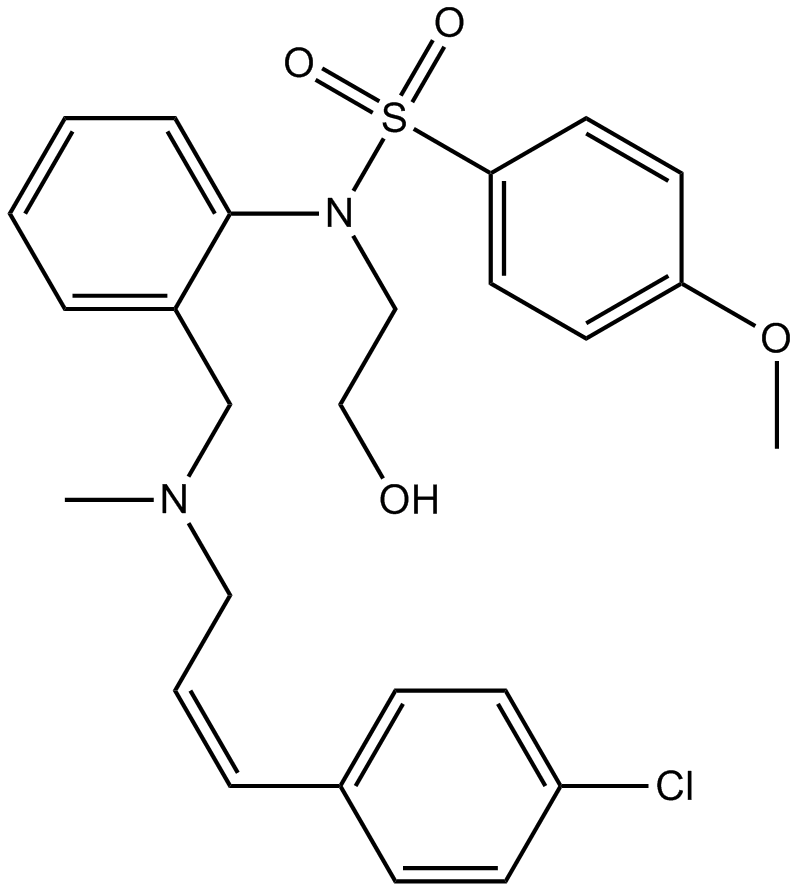
-
GC12501
KN-93 hydrochloride
KN-93-Hydrochlorid ist ein zellgÄngiger, reversibler und kompetitiver Inhibitor der Calmodulin-abhÄngigen Kinase Typ II (CaMKII) mit einem Ki von 370 nM.
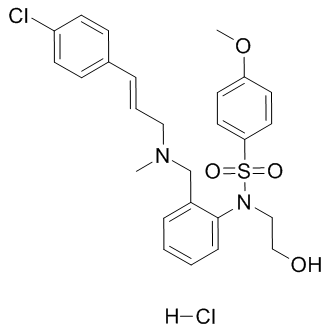
-
GC12804
KN-93 Phosphate
KN-93-Phosphat ist ein neuartiger membrangÄngiger synthetischer Inhibitor von gereinigtem neuronalem CaMK-II mit einem Ki von 370 nM.
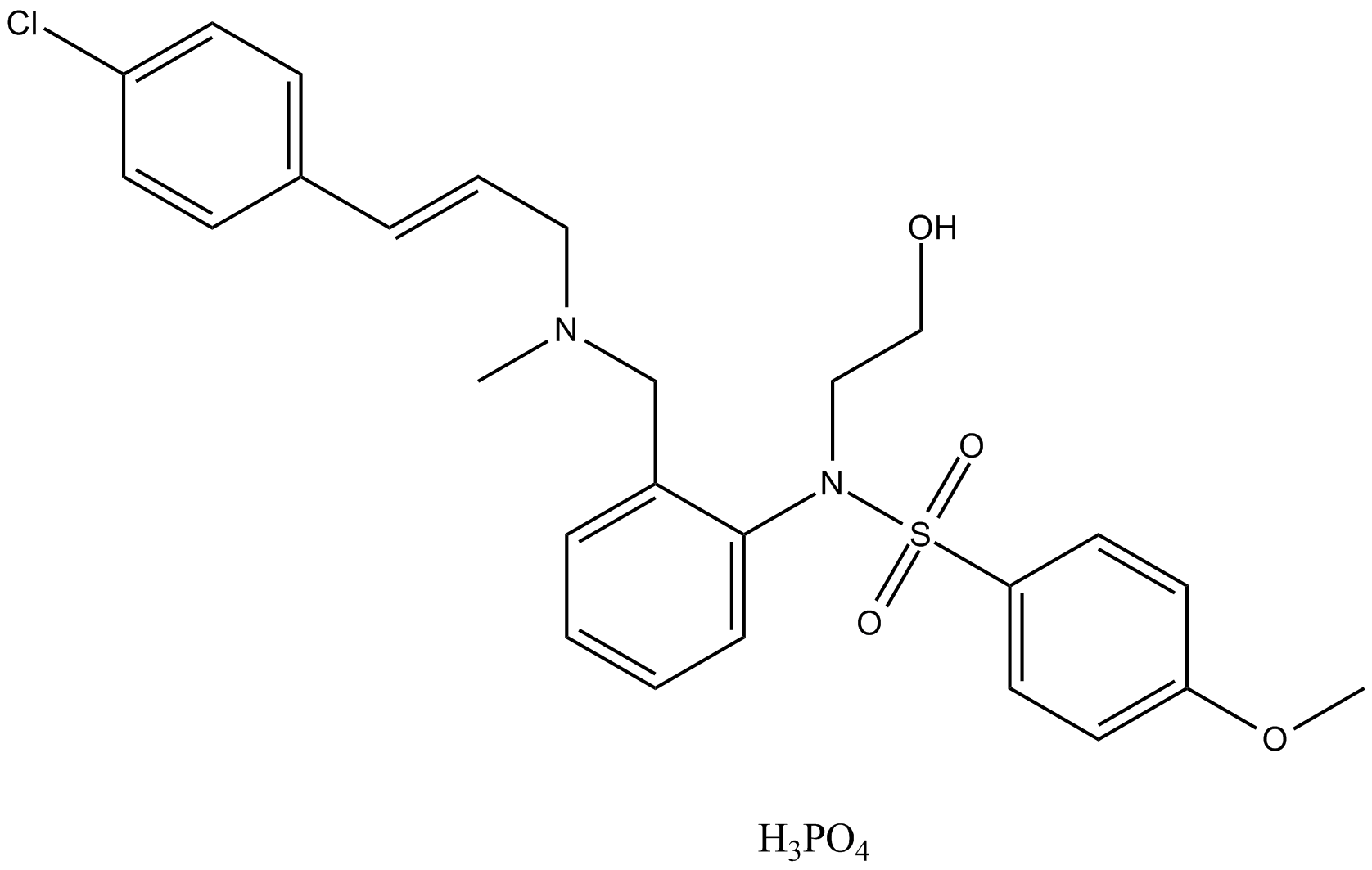
-
GC30356
Metofenazate (Methophenazine)
Metofenazat (Methophenazin) ist ein selektiver Calmodulin-Inhibitor.
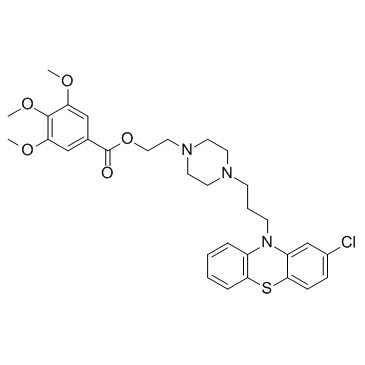
-
GC49440
ML-9
ML-9 ist ein selektiver und potenter Inhibitor der Akt-Kinase, hemmt die AktivitÄt der Myosin-Leichtketten-Kinase (MLCK) und des stromalen InteraktionsmolekÜls 1 (STIM1). ML-9 hemmt die MLCK-, PKA- und PKC-AktivitÄt mit Ki-Werten von 4, 32 bzw. 54μM. ML-9 induziert Autophagie, indem es die Bildung von Autophagosomen stimuliert und deren Abbau hemmt.
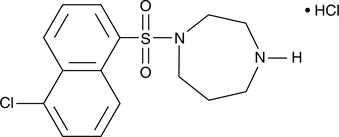
-
GC17329
MLCK inhibitor peptide 18
Das MLCK-Inhibitor-Peptid 18 ist ein Inhibitor der Myosin-Leichtketten-Kinase (MLCK) mit einem IC50 von 50 nM und hemmt die CaM-Kinase II nur bei 4000-fach hÖheren Konzentrationen.
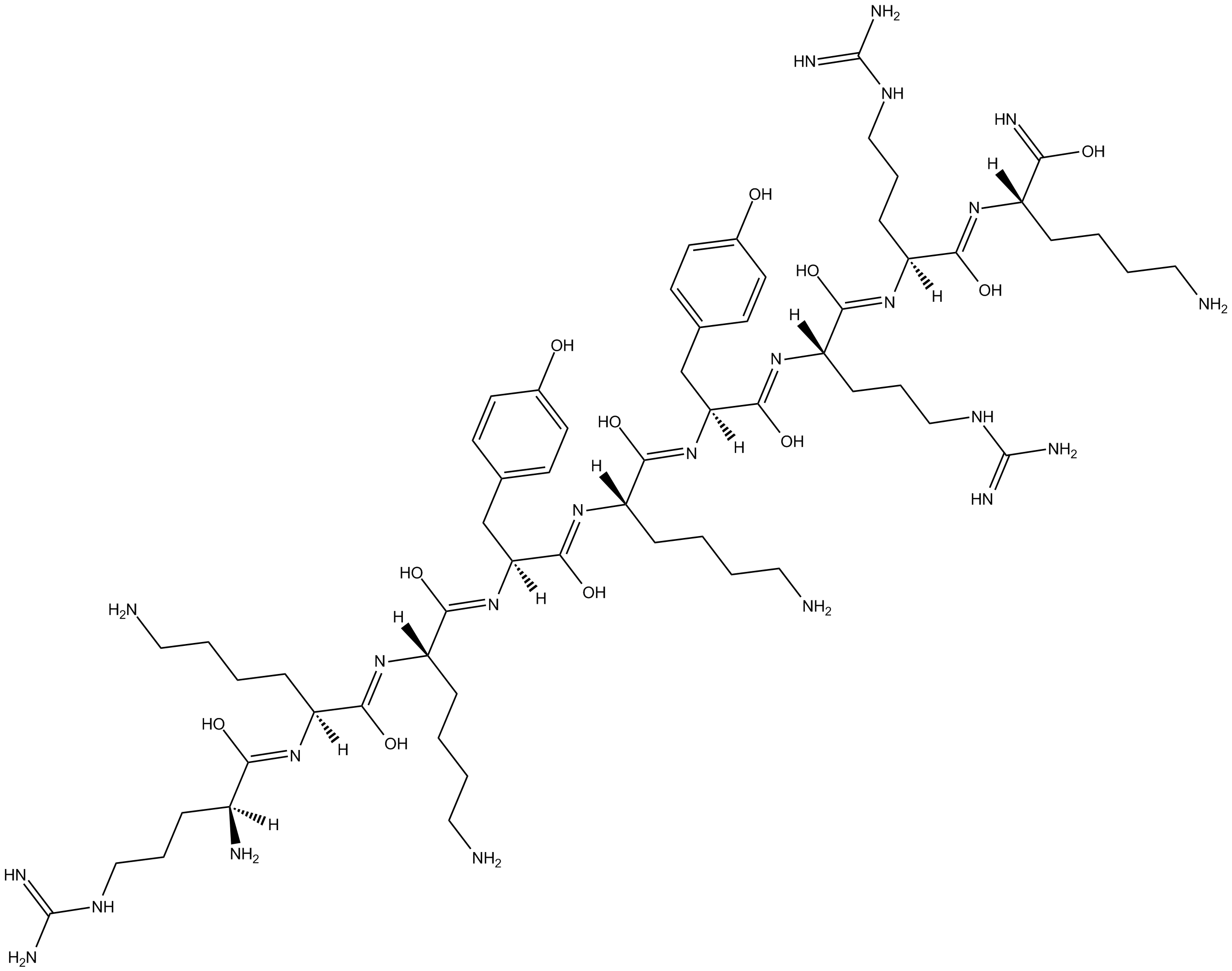
-
GC13793
NH125
NH125 ist ein potenter und selektiver Inhibitor der eukaryotischen Elongationsfaktor-2-Kinase (eEF-2K/CaMKIII), der auch die eEF2-Phosphorylierung induzieren kann, mit einem IC50 von 60 nM fÜr eEF-2K.
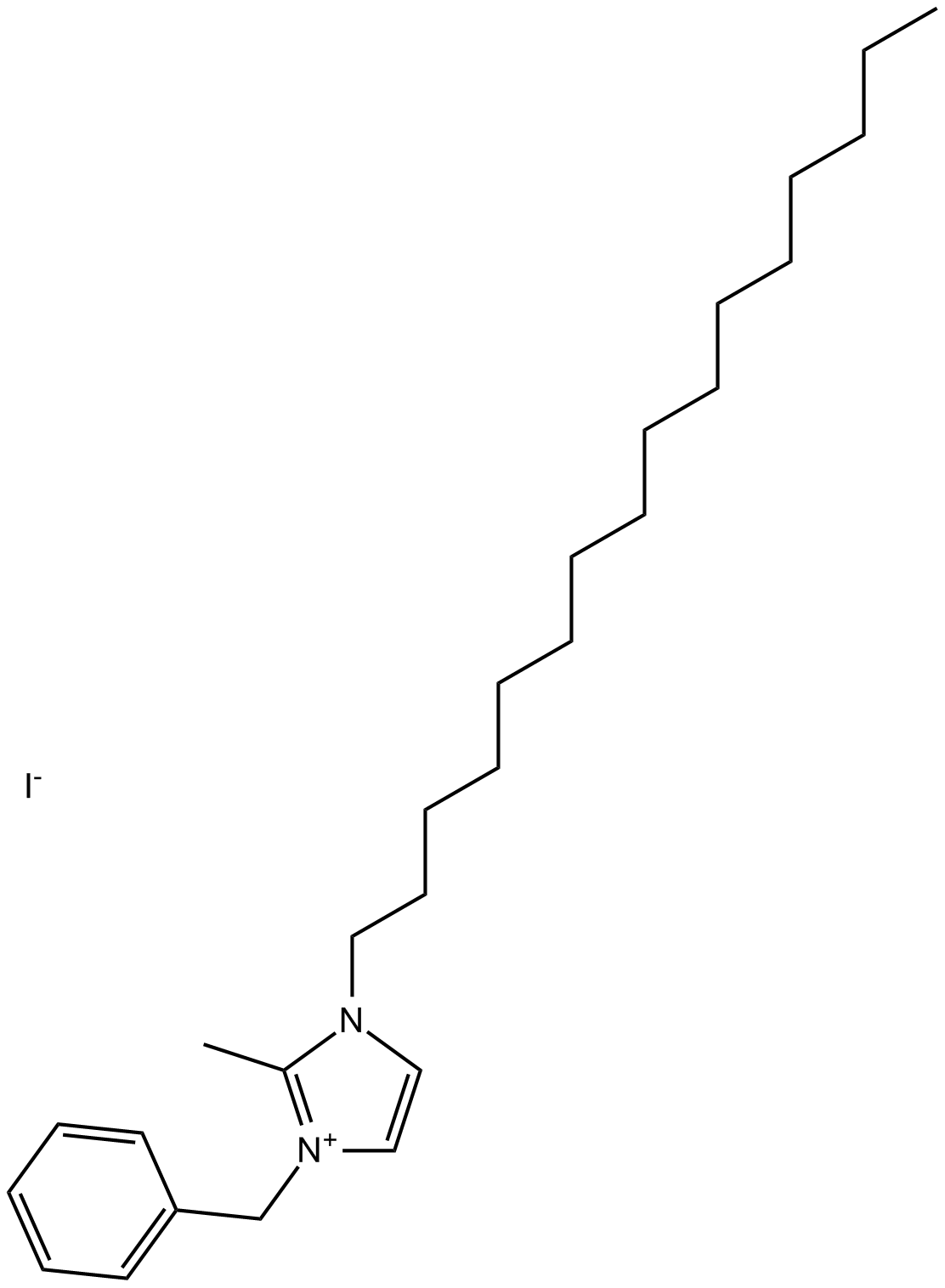
-
GC33775
Rimacalib (SMP 114)
Rimacalib (SMP 114) (SMP 114) ist ein Ca2+/Calmodulin-abhÄngiger Proteinkinase II (CaMKII)-Inhibitor mit IC50-Werten von ~1 μ M fÜr CaMKIIα bis ~30 μM fÜr CaMKIIγ.
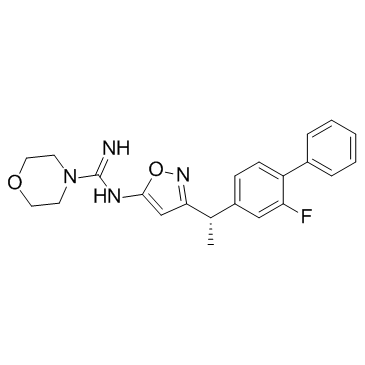
-
GC37694
STO-609
STO-609 ist ein selektiver und zellgÄngiger Inhibitor der Ca2+/Calmodulin-abhÄngigen Proteinkinase-Kinase (CaM-KK) mit Ki-Werten von 80 und 15 ng/ml fÜr rekombinantes CaM-KKα und CaM-KKβ , beziehungsweise.
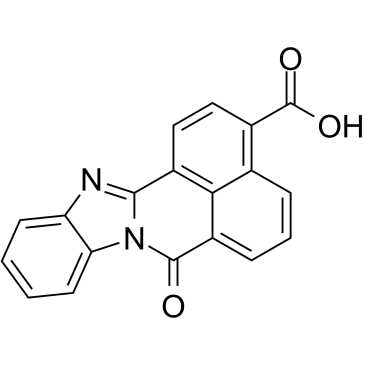
-
GC33732
Syntide 2
Syntid 2, ein Ca2+- und Calmodulin (CaM)-abhÄngiges Proteinkinase II (CaMKII)-Substratpeptid hemmt selektiv die Gibberellin (GA)-Antwort, wodurch konstitutive und AbscisinsÄure-regulierte Ereignisse unbeeinflusst bleiben.
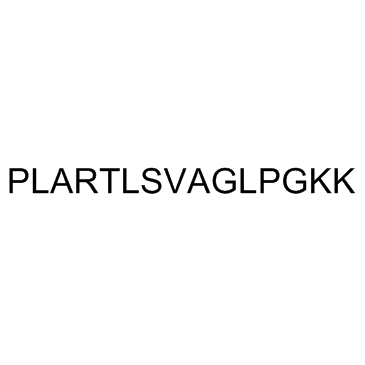
-
GC37710
Syntide 2 (TFA)
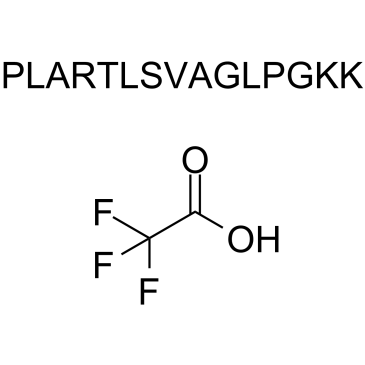
-
GC62146
XST-14
XST-14 ist ein potenter, kompetitiver und hochselektiver ULK1-Inhibitor mit einem IC50 von 26,6 nM. XST-14 induziert eine Autophagiehemmung, indem es die Phosphorylierung des nachgeschalteten ULK1-Substrats reduziert. XST-14 induziert Apoptose in Zellen des hepatozellulÄren Karzinoms (HCC) und hat Antitumorwirkungen.
